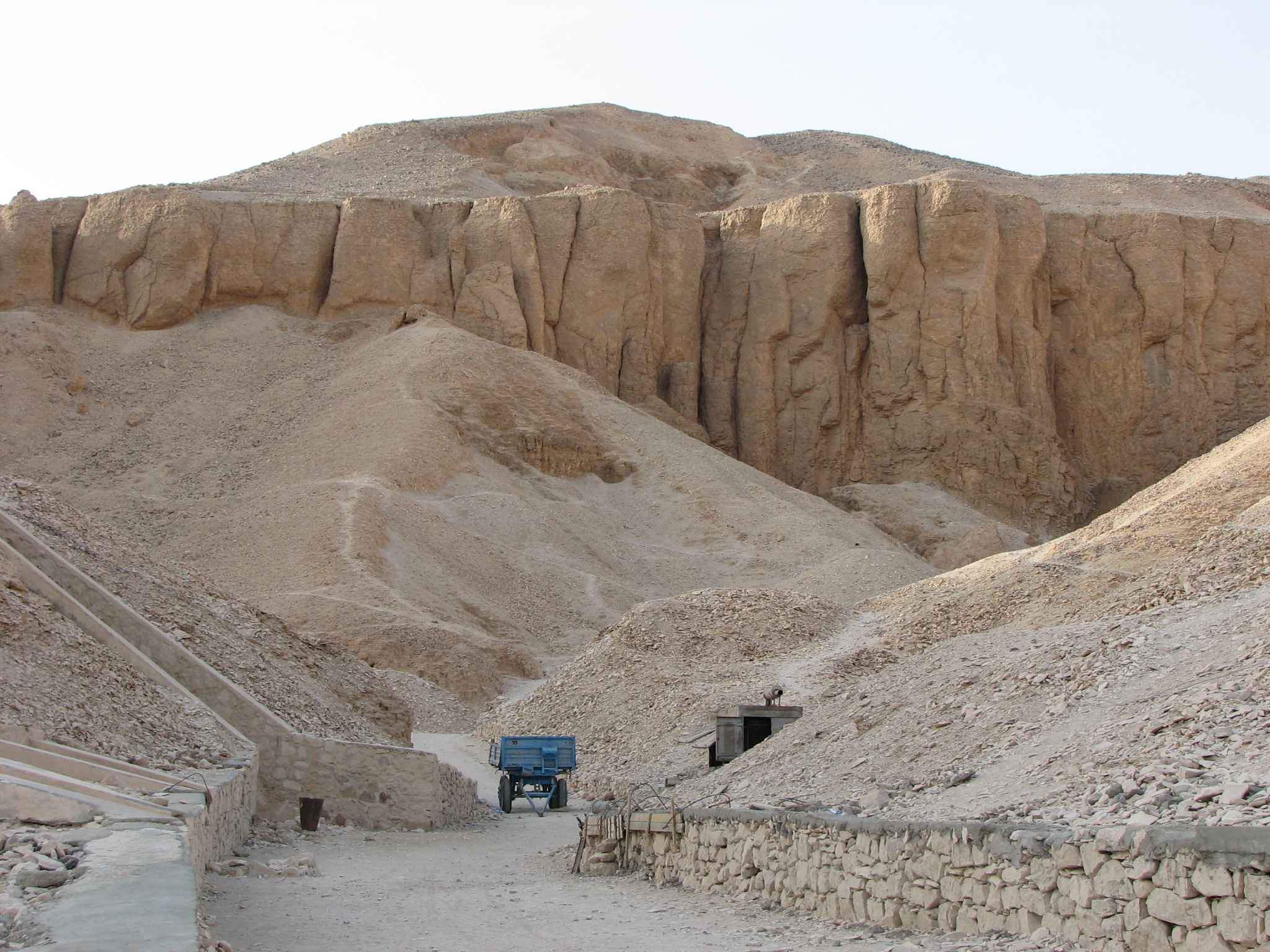Valley of the Kings
We got up early this morning, like 4:30 am. We boarded a boat and cruised across the Nile. We had breakfast at a farm on the west bank of the Nile. After breakfast, we went to visit the Valley of the Kings. The ancient Egyptians lived on the East bank of the Nile, where the sun rose, and they were buried on the West bank of the Nile, where the sun set. We knew that many of the great pharaohs, queens, and nobles were buried there. We also knew that tremendous wealth had come from these tombs that included many things now resting in museums all around the world. We also were told that the west bank of Luxor had something like its own cult society with artisans, architects, temple priests, laborers, and guards – all to help build, decorate, conceal, and protect the great tombs and temples built in this area. These people passed their knowledge and secrets down for generations through their families. I don’t know why, but somehow, it all sounded so fantastic and exciting and mysterious and romantic.
We arrived at the Valley of the Kings very early in the morning, to beat the heat and crowds. But for all the above, I wasn’t prepared for what we saw. I don’t want to say that it didn’t meet my expectations. I would probably say that I never imagined it might look like it did.
Look at the pictures I’ve included. These photos are in sequence as we entered the valley and then as we drove and walked up further into the valley.
It was a stark, steep, scorching canyon. I kept thinking that our guide must have missed the Valley of the Kings and this was the Valley of the Paupers. Nope, this was the correct canyon. This is the Valley of the Kings. It was once called the Great Place or the Place of Truth. Royals were buried here as far back as 2181 B.C. and pharaohs were buried here as far back as 1504 B.C. Why? This canyon was isolated, easy to guard, and from the Theban plain, this was where the sun appeared to set.
62 tombs have been excavated so far in the valley (as of 2007). All of them were carefully hidden originally. Some were hidden much better than others. The most recent (KV62) was the tomb of Tutankhamen which was discovered in 1922. Some tombs were open to the public, some were being renovated, and others were closed.










































